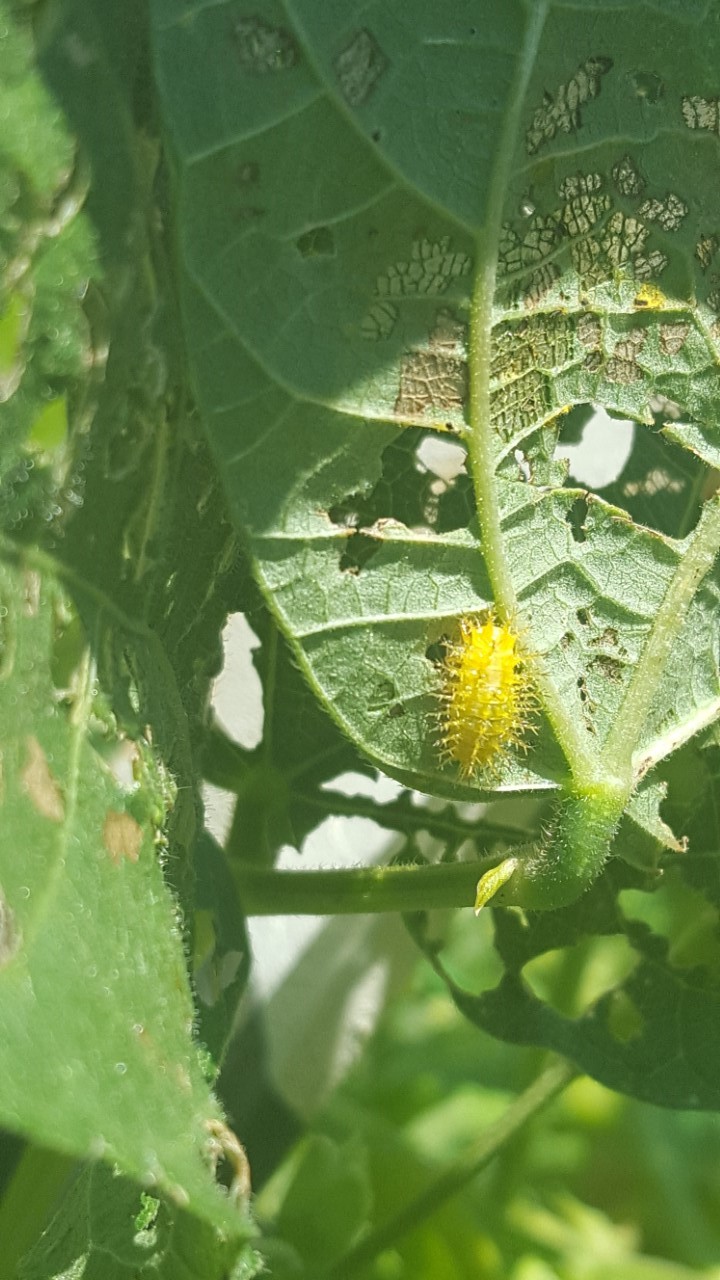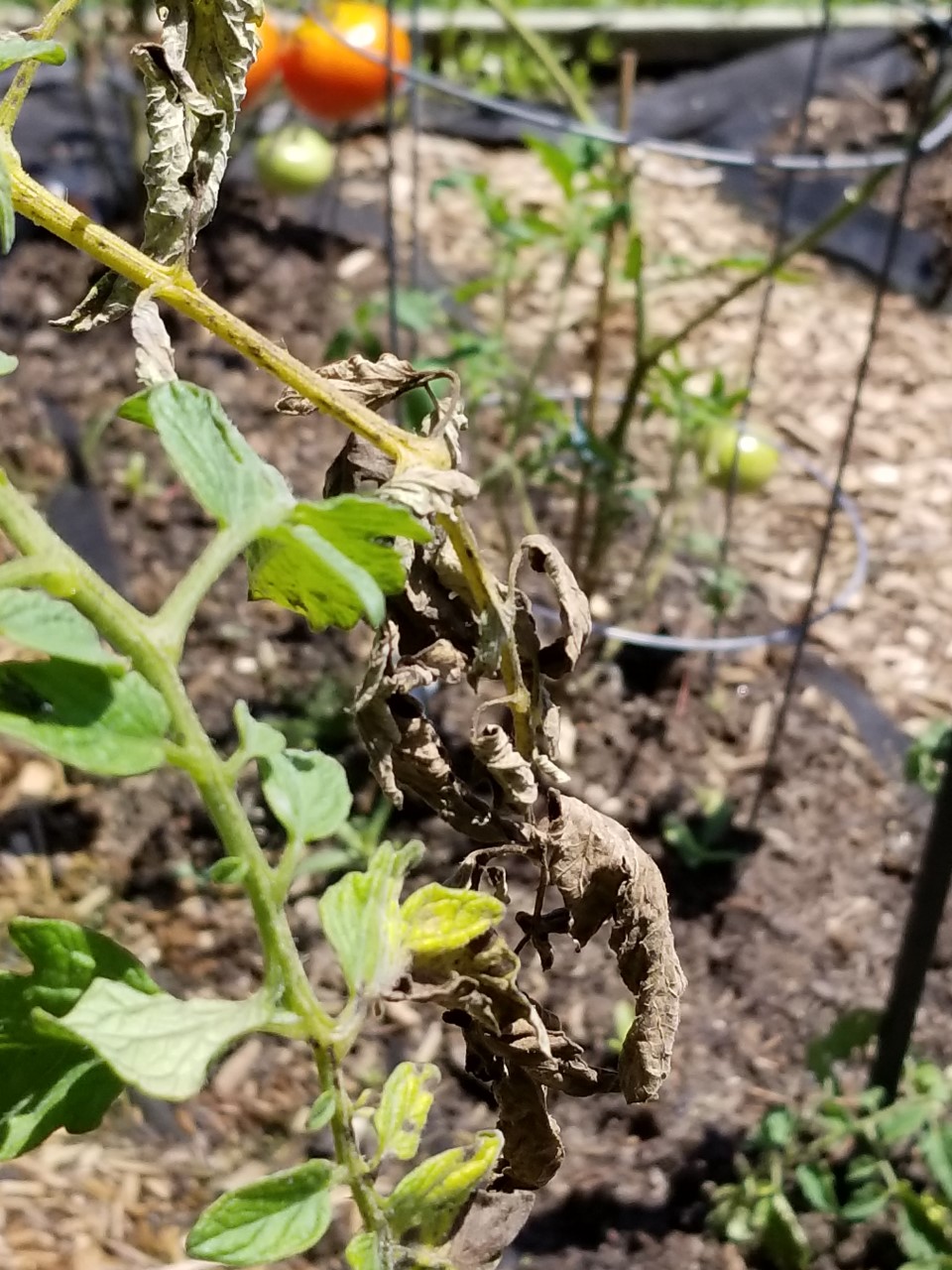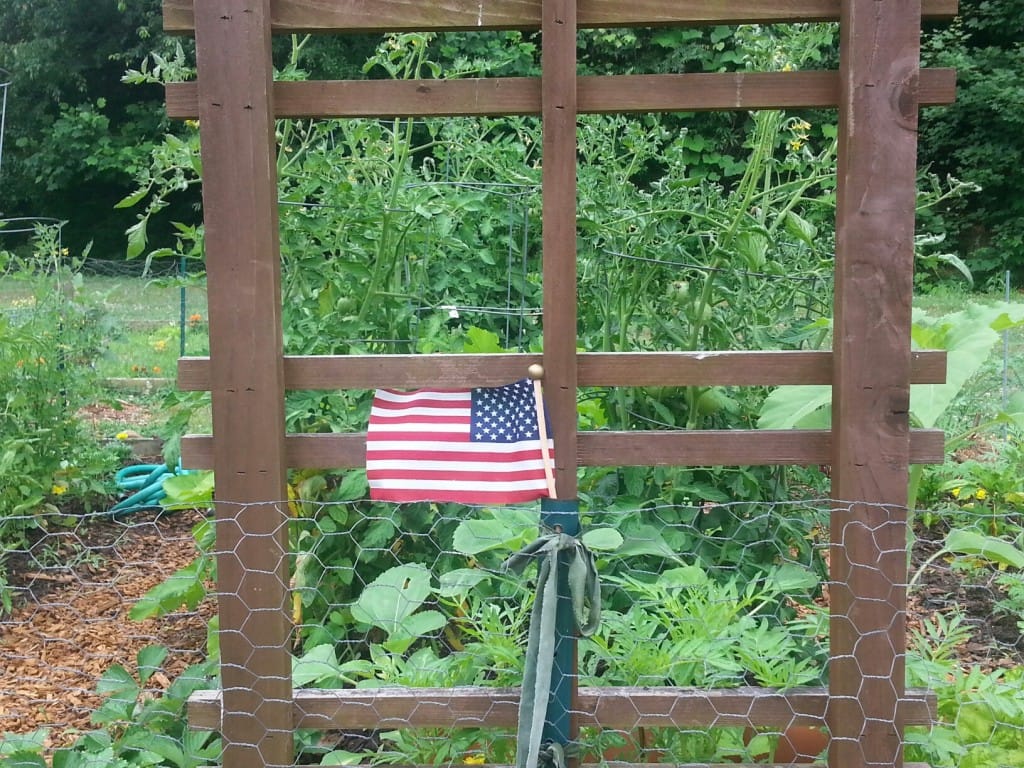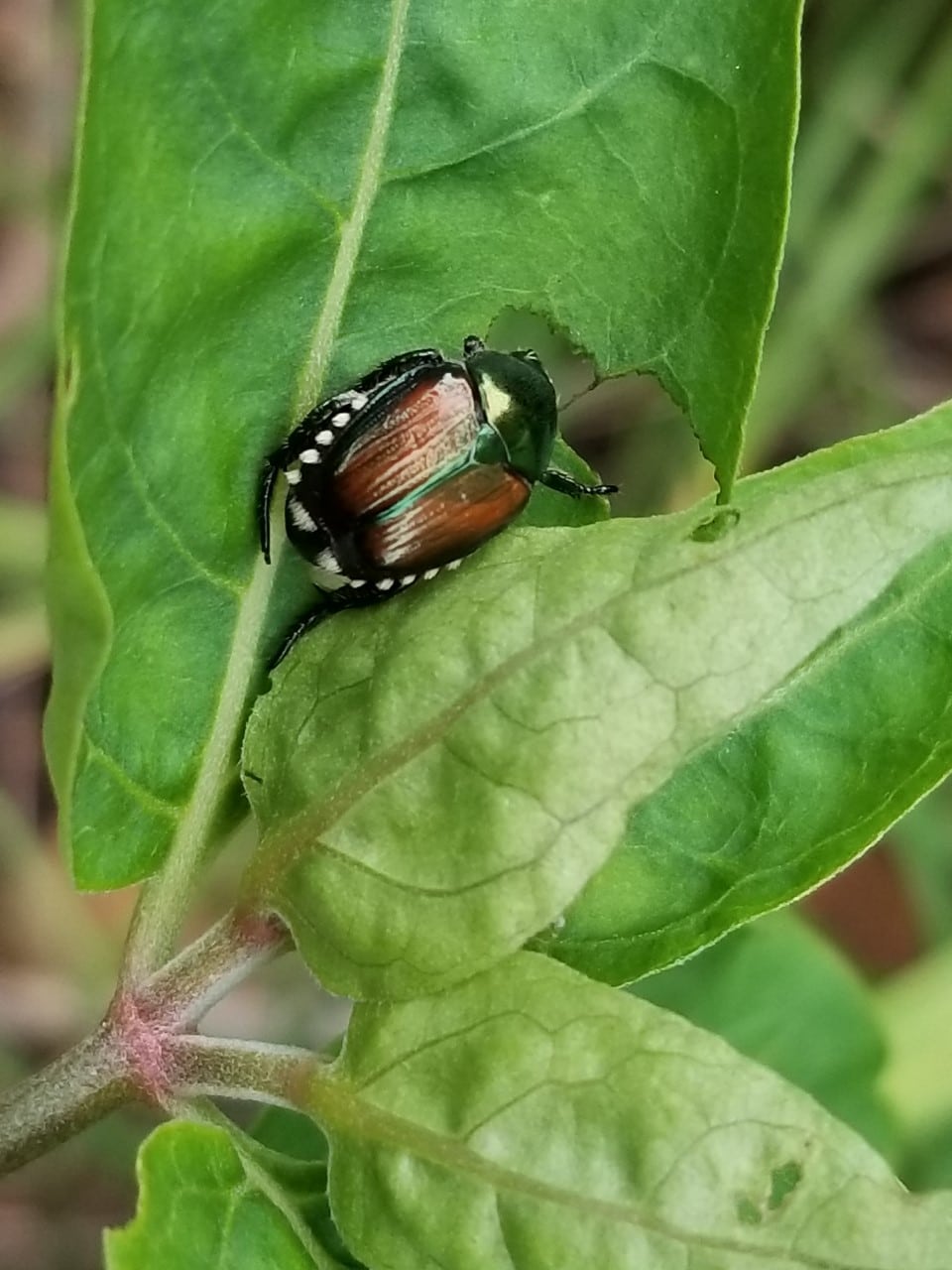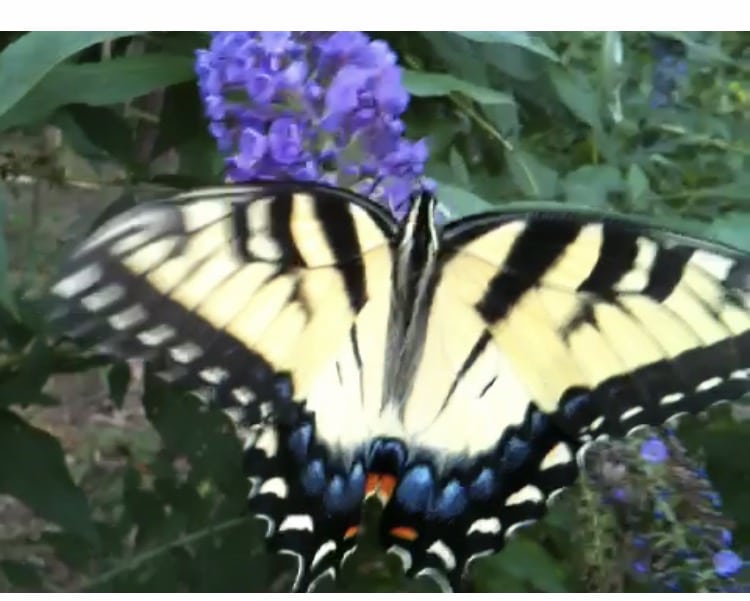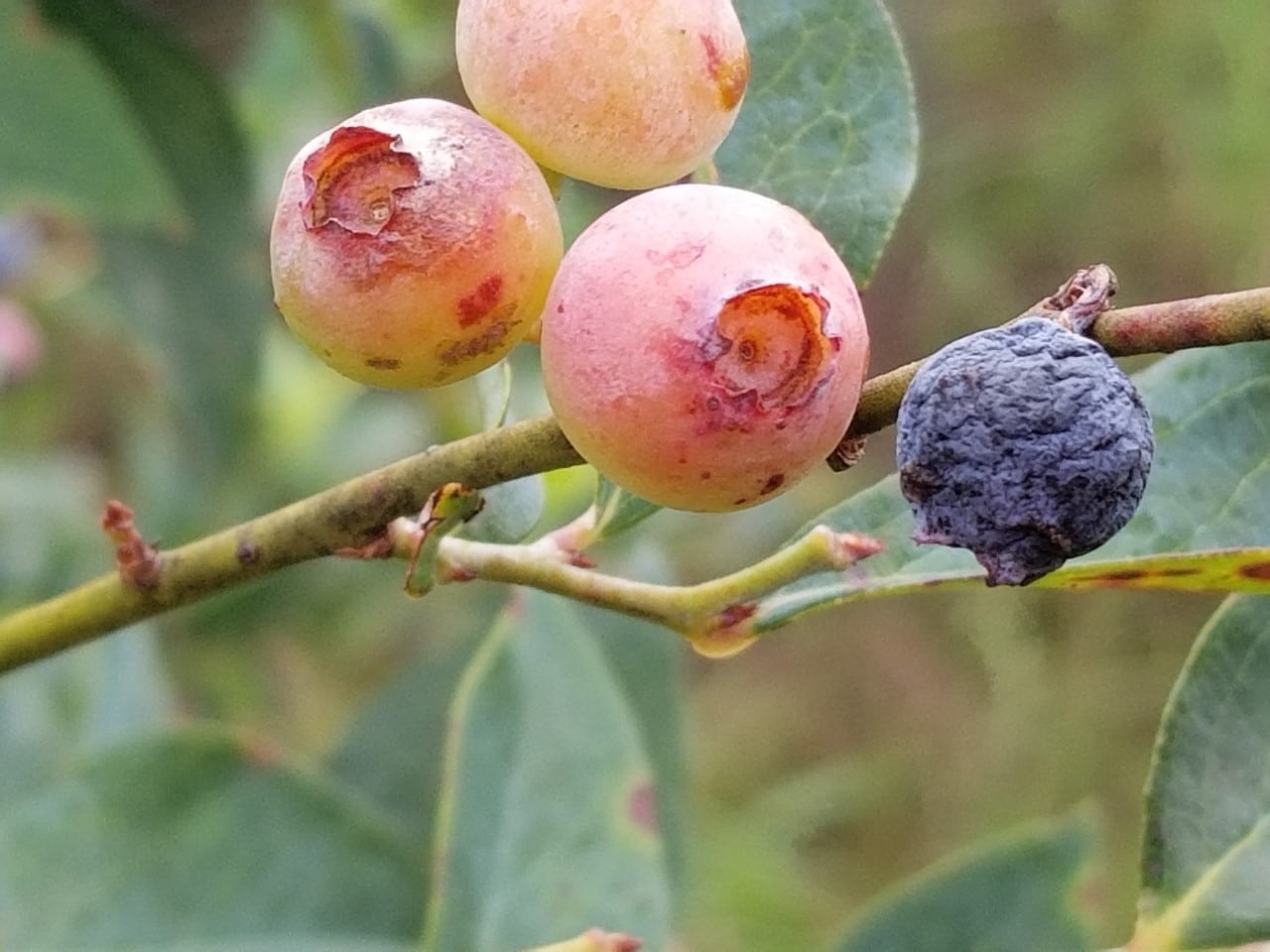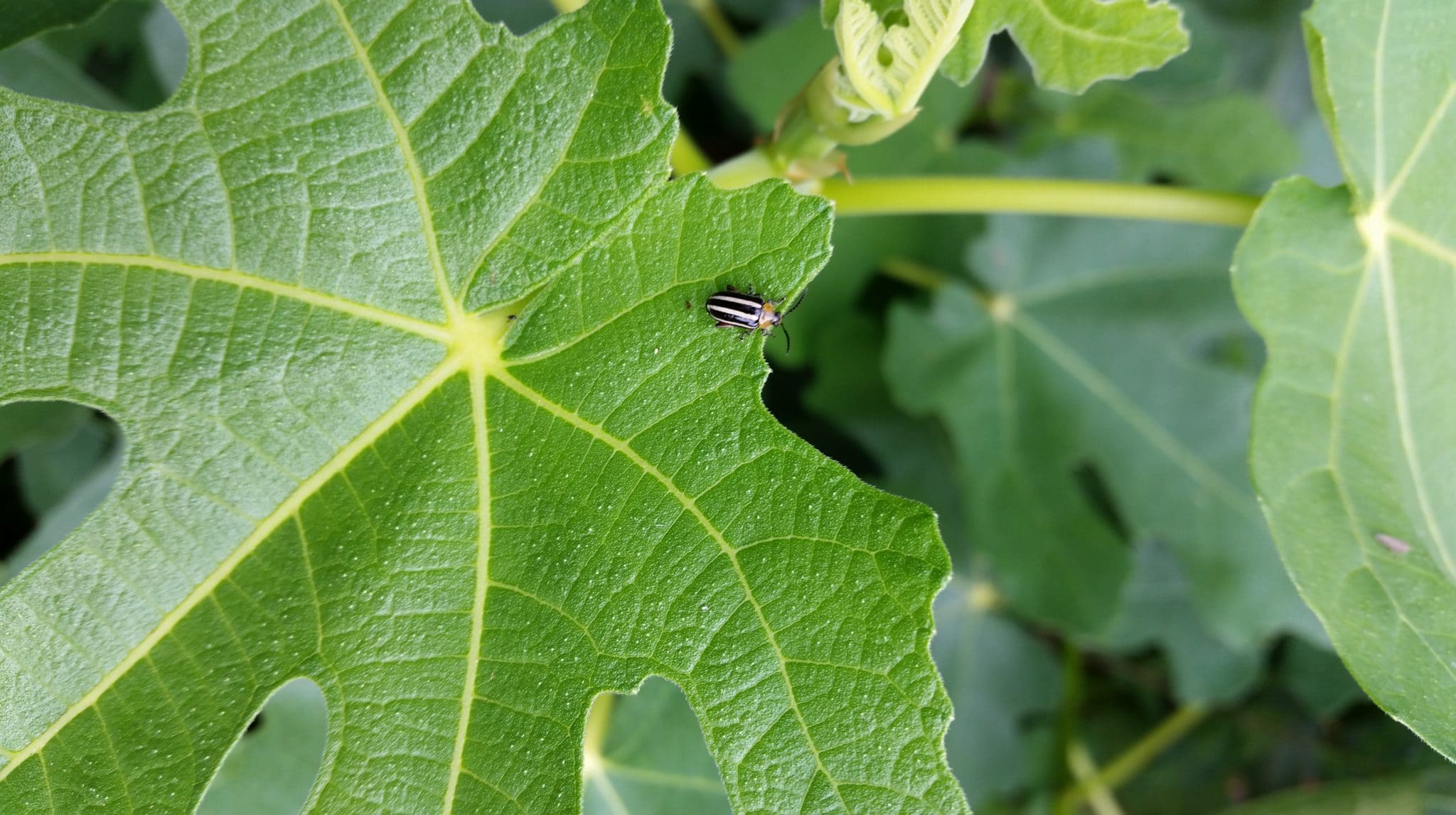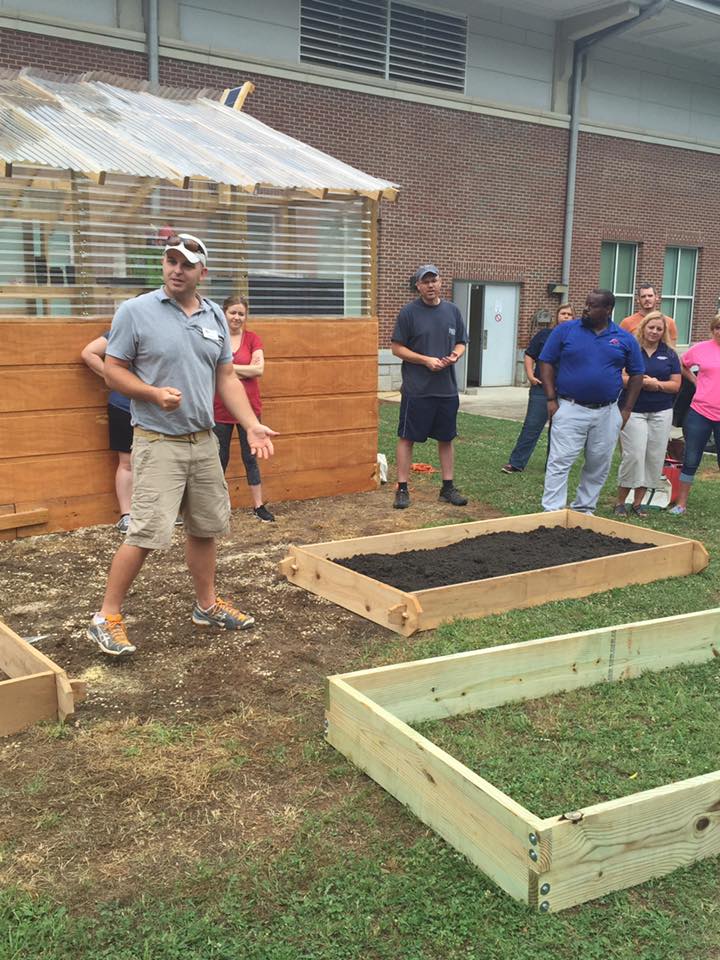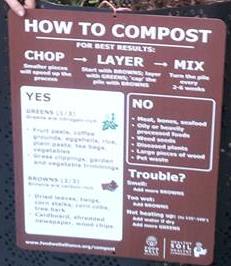Over the last several year Mexican bean beetles have been a real problem in the community garden. To complicate matters the mature beetle looks similar to our beneficial lady beetles. This short video gives you the information you need to battle this pest:
 Becky Griffin
Becky Griffin
Thinking Ahead to Combat Disease in the Garden
The increase in rain this summer seems to have brought on an increase in vegetable diseases. Sharon Dowdy, a news editor for UGA, recently spoke with UGA Extension pathology specialist Elizabeth Little about the problems gardeners are seeing. Sharon writes…
Home gardeners must fight insects and diseases to keep their vegetable plants healthy and productive. Diseases are harder to identify because, unlike bugs, you can’t easily see a pathogen, says University of Georgia Cooperative Extension specialist Elizabeth Little.
“Insects can be seen on plants, but diseases are a little mysterious,” said Little, a plant pathologist with the UGA College of Agricultural and Environmental Sciences. “You can’t just look at the plant and know what’s going on.”
Georgia’s hot, muggy summers provide the perfect conditions for diseases to thrive in, she said.
The secret to fighting diseases in homegrown vegetables is to stay a few steps ahead of them, according to Little.
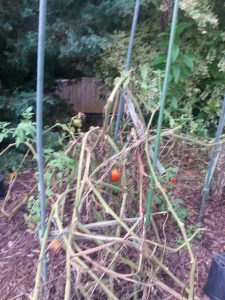
“If you wait until after you see the disease, it’s too late,” she said. “It’s all about prevention because diseases can increase very rapidly once they start.”
To fight diseases in the home garden, Little offers home gardeners these prevention tips.
- Plant in an open, sunny location with good drainage and plenty of air circulation.
- Choose disease-resistant and/or Southern-adapted varieties, if available.
- Start with healthy seeds and transplants.
- Plant summer crops, such as tomatoes and cucurbits, as early as possible.
- Rotate different crops within the garden each year if possible.
- Give plants plenty of space for good air movement. Trellis tomatoes and cucumbers.
- Limit the frequency of overhead irrigation to keep foliage dry.
- Use drip irrigation if possible.
- To help keep plants healthy, improve soil conditions with organic matter.
- Adjust pH and soil fertility based on a soil test.
- Remove old crop debris at the end of the season.
Following these practices will help home gardeners avoid most disease problems. If persistent problems occur, contact your local UGA Extension office for a correct diagnosis of the problem and a recommendation on how to treat it.
Thank you Sharon, for sharing this great advice!
Happy Gardening!
4th of July in the Community Garden
In honor of our nation’s birthday, we are looking at some vegetables that our founding fathers, and mothers, may have grown. Take notes so you can include these as you plan your future garden plots. You will have a history lesson in the garden!
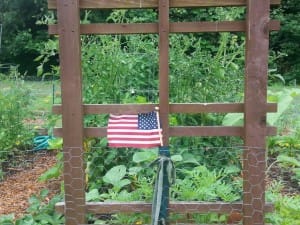
Tennis Ball Lettuce was one of Thomas Jefferson’s favorite lettuce varieties. He said “it does not require so much care and attention” as other types. The seeds were first sold in the United States in the late 18th century. During the 17th and 18th
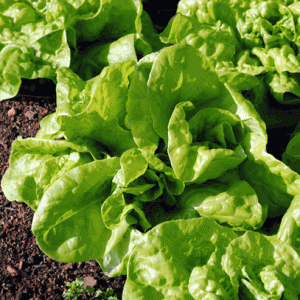
centuries it was common for gardeners to pickle the lettuce in salt brine. It is a parent of our current butterhead lettuces having light green leaves which form a small loose head. In our area sow seeds early in the spring.
Yellow Arikara Beans have a very interesting history. They were named for the Dakota Arikara tribe that Lewis and Clark met while traveling on their “Voyage of Discovery.” They were selected by Native Americans for use in the short growing season of the Northern Plains. Lewis and Clark sent some bean samples back east and they were enjoyed by Thomas Jefferson who said the bean “is one of the most excellent we have had: I have cultivated them plentifully for the table two years.” Plant these warm-season beans about 2 inches apart, 1 inch deep. Keep rows 36-49 inches apart. They are a bush type bean that is drought tolerant and can handle an early cold snap. They can be harvested for snap beans or the preferred way, letting them dry on the vine and using them for soups and stews.
Costoluto Genovese is an indeterminate Italian-type tomato with ribbing. Think of a small pumpkin-shaped tomato. Although the large amount of seeds can be a problem for some, it has great flavor in sauces or soups. Thomas Jefferson was one of the first Americans to plant tomatoes and he wrote extensively about them. These plants should be started indoors 6-8 weeks before the last spring frost. Plan for 85-90 days to maturity and they will need staking.
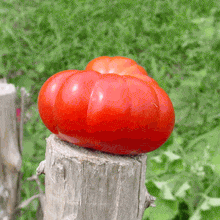
Thomas Jefferson left the most detailed farming records of any of the founding fathers. We know that colonials shared information about farming as well as plants and seeds. Martha Washington made sure fresh vegetables, fruits and berries were generously served from the Mount Vernon garden to visitors. Diaries from guests discuss the wide variety she offered. Mrs. Washington once commented “as vegetable is the best part of our living in the country.” Some of our Founding Fathers liked the garden better than others. Later in life, Benjamin Franklin gave up trying to grow much food instead visiting the local farmer’s market. This is still a great option for us today!
Information for this post came from Thomas Jefferson’s Garden and Farm Books, www.monticello.org, Seed Savers Exchange, and experience. Seeds for these plants can be ordered from a variety of heirloom seed organizations. For more information on growing any type of heirloom vegetables contact your local UGA Extension Agent.
Happy Fourth of July and Happy Gardening!
They’re Back! Japanese Beetles in Your Garden
Did you know that Japanese Beetles (Popillia japonica) feed on over 300 plant species? Plants in the rose or cherry families seem to be a favorite targets. The first one in my North Georgia garden appeared on June 1st.
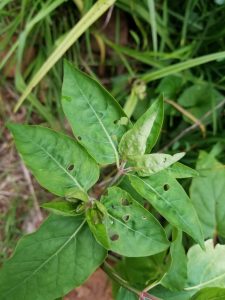
In the past gardeners reached for an insecticide to handle the problem. Sevin spray, Carbaryl (1-naphthyl N-methylcarbamate), was a popular choice. However, Sevin is a broad spectrum insectide that kills other beneficial insects! Sevin kills over 100 different insect species, including bees.
If you want to attract the beetles to your garden, add a pheromone trap. You will attract them from all over your area. Seriously, they will bring more beetles to your garden. Maybe you can talk a neighbor into purchasing one!
There is an easier way to handle a Japanese Beetle infestation.
Fighting Back!
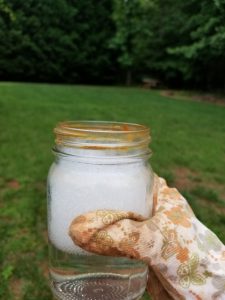
To control the beetles simply pick them off of your plants and drop them in a jar of soapy water. Be aware that they will fly away so act quickly. So practice your technique of grabbing or forcefully knocking the insects into the jar. They will drown quickly.
When I was younger my family planted a fruit orchard. When the orchard was young one of my jobs was to pick off Japanese Beetles and deposit them into a jar of gasoline I carried around the orchard. Wow, the gasoline was not needed. Soapy water works just as well.
Worst case scenario, hang in there. They won’t be around for long!
Happy Gardening!
Pollinator Week 2017
It is Pollinator Week 2017! Since last year the rusty patched bumble bee has been put on the Endangered Species List and honey bee keepers in the United States reported hive losses of 33% over 2016-17. How can the average Georgia gardener help our pollinators? These steps are easy and will make a real difference to our pollinating insects:
Read Georgia’s Pollinator Protection Plan
University of Georgia entomologists collaborated with stakeholders across the state to develop Protecting Georgia’s Pollinators. There is a role for every Georgia citizen whether you are a farmer, a landscaper, or a homeowner.
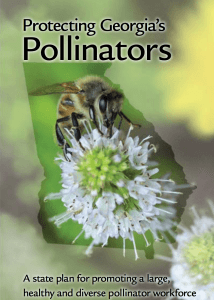
Plant Flowering Plants
Adding flowering plants to your food garden attracts pollinators and as a bonus can also attract other beneficial insects. To attract butterflies, adding plants that sustain the caterpillar stage of the butterfly is important. The University of Georgia has done research on pollinator plants and has suggestions for plants that do well in our climate.
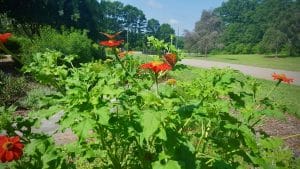
Plan for a Succession of Bloom
Strive to have plants flowering as much of the year as possible. Even during the winter months if temperatures rise above 50 F, bumble bees and honey bees are flying and looking for nectar and pollen.
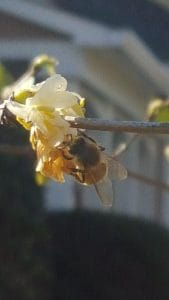
Create a Water Source
Adding pebbles or stones to your birdbath makes a wonderful water source for small insects with delicate legs. By cleaning the birdbath once a week you will avoid any mosquito problems. If you don’t have a birdbath the drainage pans used to catch the water running out of potted plants can be used.
Wisely Use Any Pesticide
Examine your use of any pesticide. Is the pesticide really necessary? Your UGA Extension agent can assist you with any pest situation and guide you in deciding if a pesticide is the best answer. Make sure you thoroughly read and follow any pesticide label. The label is the law.
Have Your Garden Certified as a Georgia Pollinator Space
The Georgia Pollinator Spaces program is an initiative designed to recognize gardeners that consciously make an effort to improve pollinator health by creating pollinator habitat. To get inspiration take a look at some of the gardens that are part of the program.
However you decide to celebrate Pollinator Week be sure to check our daily pollinator posts on the UGA Community and School Garden Facebook page.
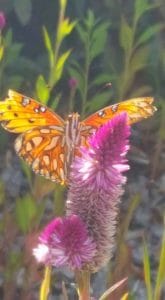
Happy Pollinator Week!
Mummy Berry in Community Garden Blueberries
You probably have seen them and not given them much notice, growing among your blueberry fruits. They look like something just went wrong in fruit development. These are mummy berries and they are actually part of a fungal pathogen, Monilinia vaccine-corymobosi. This is a blueberry disease!
Mummy berries are caused by a pathogen
Over the season mummies fall off of the plant and oversummer and overwinter on the ground. When conditions are just right in the spring, these bodies will germinate and can produce 650,000 disease-causing ascospores. The ascospores can re-infect your plants creating a disease cycle.
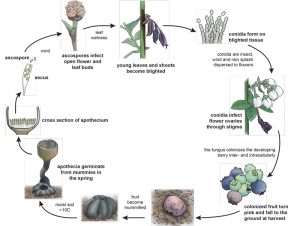
Control is not difficult for hobby blueberry growers
This disease affects leaves and affects the fruits when the pathogen is spread to the flower bloom, by wind or by insects. For commercial growers this can be a serious problem. For the casual blueberry grower it is much easier. Simply remove the mummies and throw them away. Also, check the ground to remove those mummies that have fallen.
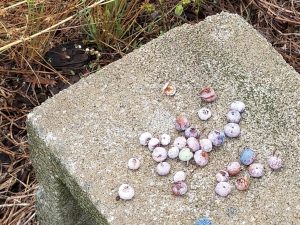
For those of you interested in pathology, Jade Florence has an excellent article, Mummy Berry, in The Plant Health Instructor. If you are unsure if mummy berry is your problem, contact your local UGA Extension office for assistance. If you don’t have blueberries in your community garden, they are a great addition and easy to plant.
Happy Gardening!
Insect Scouting Hints
Insect scouting is an important part of integrated pest management, whether you are a large scale farmer or just “farm” a 4′ X 8′ raised bed. Here are some hints to help you scout successfully so that you can manage garden insect pests:
Hint #1 Look under plant leaves
Damaging insects often stay on the underside of leaves or in leaf crevices and plant whorls. Check those areas carefully.
Hint #2 Look for insect eggs
Insect eggs are small and by spotting and removing them you limit future damage. Squash bug eggs are a good example.
Hint #3 Confirm insect identification
The majority of insects are not harmful to your plants. Many are actually beneficial and can help you manage pests. If you are unsure of an insect identification contact your local UGA Cooperative Extension office for confirmation. Oftentimes you can send your agent a photo and that is all he/she needs to assist you.
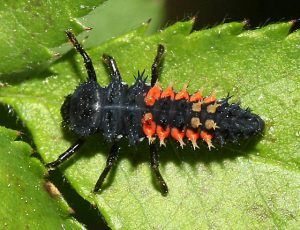
Hint #4 Scout at night
Some insects do their damage at night. Grabbing a flashlight and scouting after dark could yield some interesting results.
Happy Scouting!
Simple Raised Beds for Your Georgia Garden
Josh Fudor, UGA ANR Agent in Cherokee County, developed this simple raised bed design that is perfect for community or school gardens. This is the plan that we use in our teacher training workshops and the teachers appreciate the simplicity.
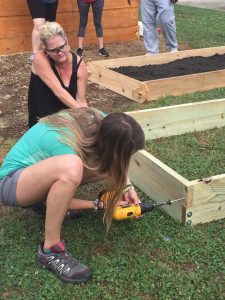
Gardening in raised beds is an easy way to get started growing great vegetables. The benefit of raised bed gardening includes: ease of management, prevention of soil compaction, better drainage, longer growing season, and ease of soil improvement.
Raised beds can be constructed out of just about any material and there are a number of kits available that are quick and easy to assemble. With a few tools and minimal time commitment the ambitious gardener can construct their own and save money.
Materials List
|
Qty. |
Material |
Cost |
|
3 |
8’ 2”x10” Boards (cost will vary depending on choice, i.e. cedar, pine, treated) We will use treated pine for this example |
37.00 |
|
16 |
1⁄4” x 4” Galvanized Lag Screws |
14.50 |
|
16 |
1⁄4” zinc plated washer |
1.90 |
|
1 |
Cubic yard or 27 cubic feet of soil/compost mixture |
40.00 |
|
* Prices may vary depending on location and if delivery is required |
Total: $ 93.40 |
Tools Needed
- Saw-hand or electric powered
- Speed square
- Tape measure
- Drill
- 1⁄4” socket driver bit
- 3/16” drill bit for pre-drilling
- Safety Glasses and gloves
Step One:
Choose the straightest boards with little to no knot holes. This will make things much easier and make for a longer lasting finished product.
Step Two:
Cut one of the 8’ 2×10” boards in half. 8’ boards should 96” long but be sure to measure first just to be safe.
Step Three:
Make a notched cut out of the ends of all the boards. These notches provide added stability to the bed without the use of additional reinforcement. A 10” board is actually 9 1⁄4” wide so the mid-point of the board is 4 5/8” a cut 1 1/2” deep is needed to ensure the boards are flush at the corners.
The graphic below shows what the cuts should look like on all 4 of the boards when done, note that the notches are cut out on opposite sides of the board, this should be done on all boards.

Step Four:
Once all 4 boards have been notched on opposite sides of the board, lay them out to form the box. If cuts were made to proper measurements the boards should fit together smoothly. Pre-drill 2 holes in each end of all the boards approximately 3/4” from the end of the board. See Figure 2 below:
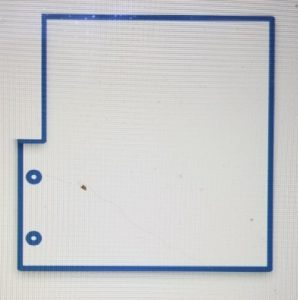
Step Five:
Afer holes have been pre-drilled place one washer on 4” lag screw and drive them through the pre-drilled holes. 16 lag screws will be inserted with 4 on each corner.
Step Six:
Position bed in a location that receives at least 6-8 hours of direct sunlight on a North-South axis.
Happy Raised Bed Gardening!
Celebrating Compost at Marietta City Schools
What is composting? By: Jaylin Cabrera, 6th Grade, age 11
Composting is nature’s process of recycling decomposed organic materials into a rich soil known as compost. Composting transforms garden and other vegetable waste into a dark, rich productive soil amendment that gardens call “Black Gold.” Composting is nature’s way of recycling . Composting is also a natural biological process. Composting comes in many different ways for example worm composting.
What is compost? Compost is an organic matter , such as raw food scraps from fruits like apples or bananas,fallen leaves ,and coffee grounds ,that has been decomposed and recycled to use as fertilizer for growing new plants . Why is composting important ? Composting is beneficial in many ways it is used as an organic fertilizer for soil and greatly contributes to a cleaner environment by composting your raw food scraps you are reducing the amount of trash that is put into a landfill and recycling pollutants in the air.
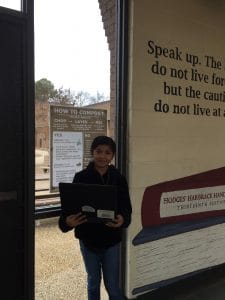
During each lunch period an average from 13 to 18 pounds of vegetative waste is saved from the landfill. Under the guidance of a Cobb County Master Gardener volunteer, our Middle Grades Earth Ambassadors compost over three lunches twice a week totaling 540 pounds per week 2655 pounds per school year. That is a lot of “BlackGold.”
Farm to School Week and the Golden Radish
The Golden Radish Award is a way to recognize school systems who engage in farm to school activities. University of Georgia Extension is proud to be a partner in this very worthwhile program. Across the state UGA Extension agents work in Farm to School efforts. This includes Agriculture and Natural Resources Agents (ANR), Family and Consumer Science Agents (FACS) and 4-H Agents.
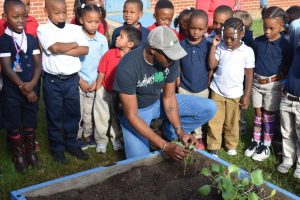
Farm to School Successes in Georgia
From the project website, almost one-third of Georgia school districts were recognized for their farm to school work during the 2015-2016 school year. Awardees collectively:
- Served 39 million school meals that included local food
- Held 8,246 taste tests of fresh, local food to students
- Taught 3,406 garden, food and nutrition lessons to students
- Tended 575 edible school gardens
- Hosted 1,935 hands-on cooking activities with students
- Incorporated farm to school into 390 staff professional development opportunities
- Championed and sustained district-wide policies or procedures into 29 schools districts
How Can You Earn the Golden Radish?
If you work in a school garden you could be on the way to earning the Golden Radish award. Having an edible school garden and conducting student taste tests are two of the ways to start qualifying for the award. Other possible criteria include hosting a farmer to your school, integrating farm to school activities into school curriculum and having students work with local chefs to create delicious meals. If a teacher from the school attends any of UGA’s school garden teacher trainings, that also counts towards the award.
Applications are Now Open
Applications are now open for the 2017 Golden Radish Award. Applications are due by June 30, 2017 and the online application is easy to use and with save and return capability! Application details, award criteria, and examples of programs and activities that meet the criteria requirements are available at the website.
Let Extension know if we can help!
Happy Farm to School Week!
